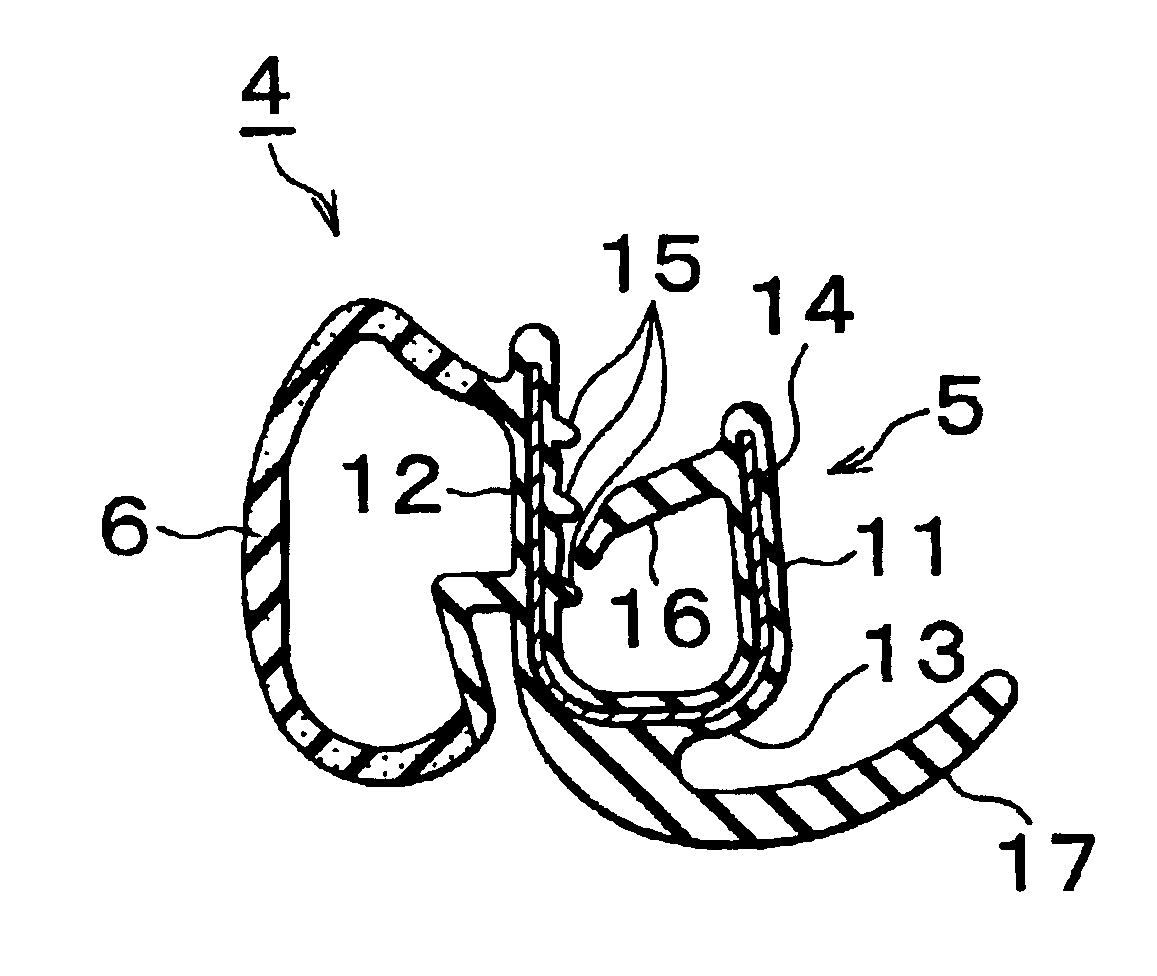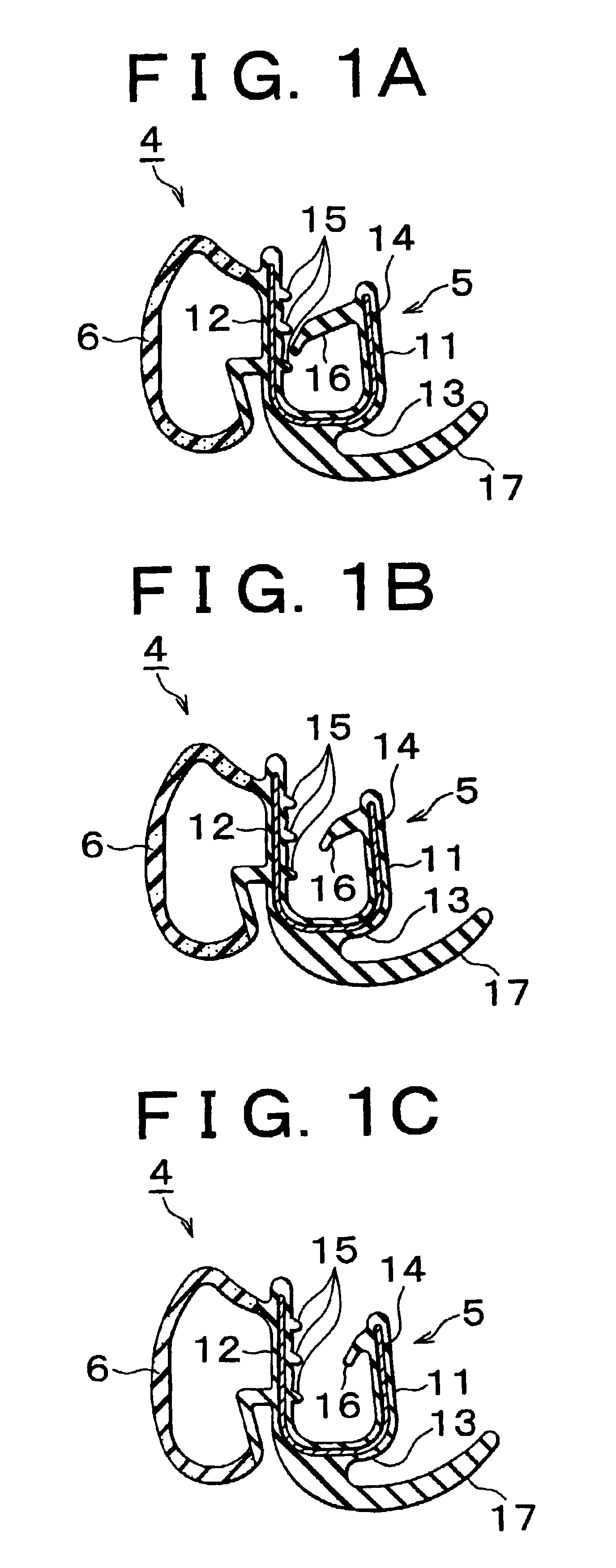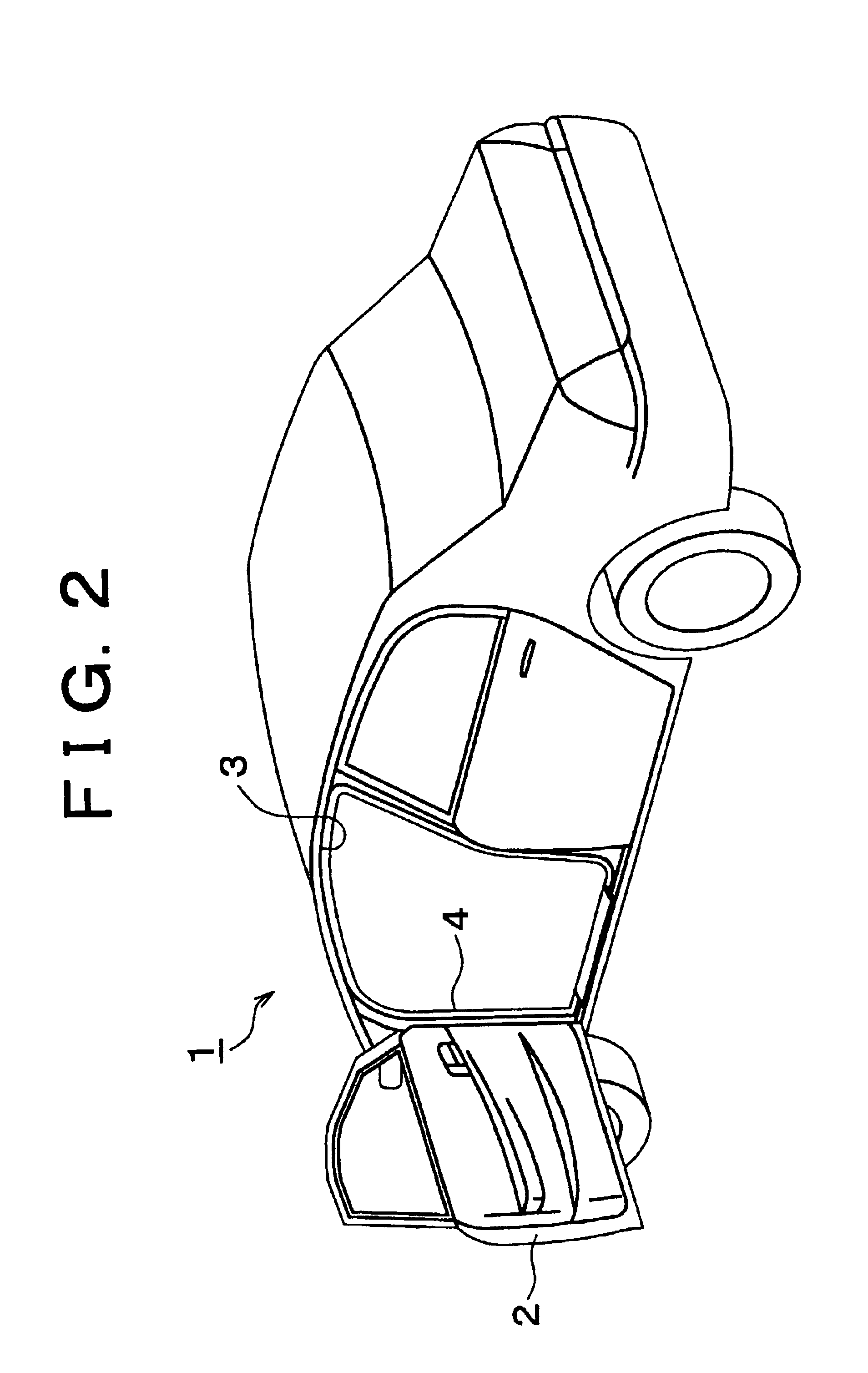Weather strip having variable length holding lip
a technology of holding lip and weather strip, which is applied in the field of weather strips, can solve the problems of reducing the efficiency of attaching the weather strip to the vehicle body, changing the length, and the control of the length of the holding lip may become complicated, so as to reduce the load or stress, the length of the holding lip, and the effect of large elastic for
- Summary
- Abstract
- Description
- Claims
- Application Information
AI Technical Summary
Benefits of technology
Problems solved by technology
Method used
Image
Examples
first embodiment
[0038]Hereinafter, the invention will be described with reference to the attached figures. As shown in FIG. 2, a weather strip 4 is provided on a periphery of a door opening 3 that faces α door 2 located on one side of a vehicle 1. The weather strip 4 of the embodiment is attached to the entire periphery of the door opening 3 except for its bottom portion, and is entirely formed by extrusion molding.
[0039]As shown in FIGS. 1A to 1C and FIGS. 3A to 3C, the weather strip 4 includes a trim body 5 and a seal portion 6. The trim body 5 includes an inner sidewall 11 facing the inside of the vehicle, an outer sidewall 12 facing the outside of the vehicle, and a connecting portion 13 connecting the sidewalls 11, 12. The connecting portion 13 has a substantially curved shape in section and thus the trim body 5 as a whole has a substantially U-shaped cross section. The trim body 5 is formed of EPDM (ethylene-propylene-diene terpolymer) solid rubber and includes a metal insert 14 embedded ther...
third embodiment
[0073]Hereinafter, the invention will be described with reference to FIG. 8 and FIG. 9. As shown in FIG. 8, the weather strip 4 is provided on the periphery of the door opening 3 that faces the door 2 disposed on one side of the vehicle 1. The weather strip 4 according to this embodiment is attached to the entire periphery of the door opening 3, and is entirely formed by extrusion molding. The weather strip 4 is obtained as one of a plurality of whether strips formed by extrusion molding. As shown in FIG. 9, the opposite end faces α and β of the weather strip 4 are joined to each other. A portion of the weather strip 4 in which the end faces α and β are joined together is located at the lower, front side of the door opening 3 (i.e., the lower, left side in FIG. 3).
[0074]As in the first embodiment as shown in FIGS. 1A to 1C and FIGS. 3A to 3C, the weather strip 4 according to the third embodiment includes the trim body 5 and the seal member 6. A plurality of the holding lips 15 are f...
fourth embodiment
[0090](h) While the length of the variable holding lip 16 is changed among three lengths throughout the entire circumference of the weather strip 51 in the fourth embodiment, the length of the variable holding lip 16 may be continuously and gradually changed in one or more portion(s) of the weatherstrip 51.
[0091](i) While the weather strip 51 is not provided in the predetermined bottom portion of the door opening 3 in the fourth embodiment, the weather strip 51 may be provided in the predetermined bottom portion of the door opening 3. Namely, even if the scuff plate 52 is provided as in the fourth embodiment, the weather strip 51 may be attached to the entire circumference of the door opening 3.
[0092](j) The engaging member(s) 55 as used in the fourth embodiment may be eliminated, and the scuff plate 52 may be directly fitted onto the flange 23.
[0093](k) While the scuff plate 52 covers the entire weather strip 51 having the trim body 5 and the seal member 6 in the fourth embodiment,...
PUM
 Login to View More
Login to View More Abstract
Description
Claims
Application Information
 Login to View More
Login to View More - R&D
- Intellectual Property
- Life Sciences
- Materials
- Tech Scout
- Unparalleled Data Quality
- Higher Quality Content
- 60% Fewer Hallucinations
Browse by: Latest US Patents, China's latest patents, Technical Efficacy Thesaurus, Application Domain, Technology Topic, Popular Technical Reports.
© 2025 PatSnap. All rights reserved.Legal|Privacy policy|Modern Slavery Act Transparency Statement|Sitemap|About US| Contact US: help@patsnap.com



